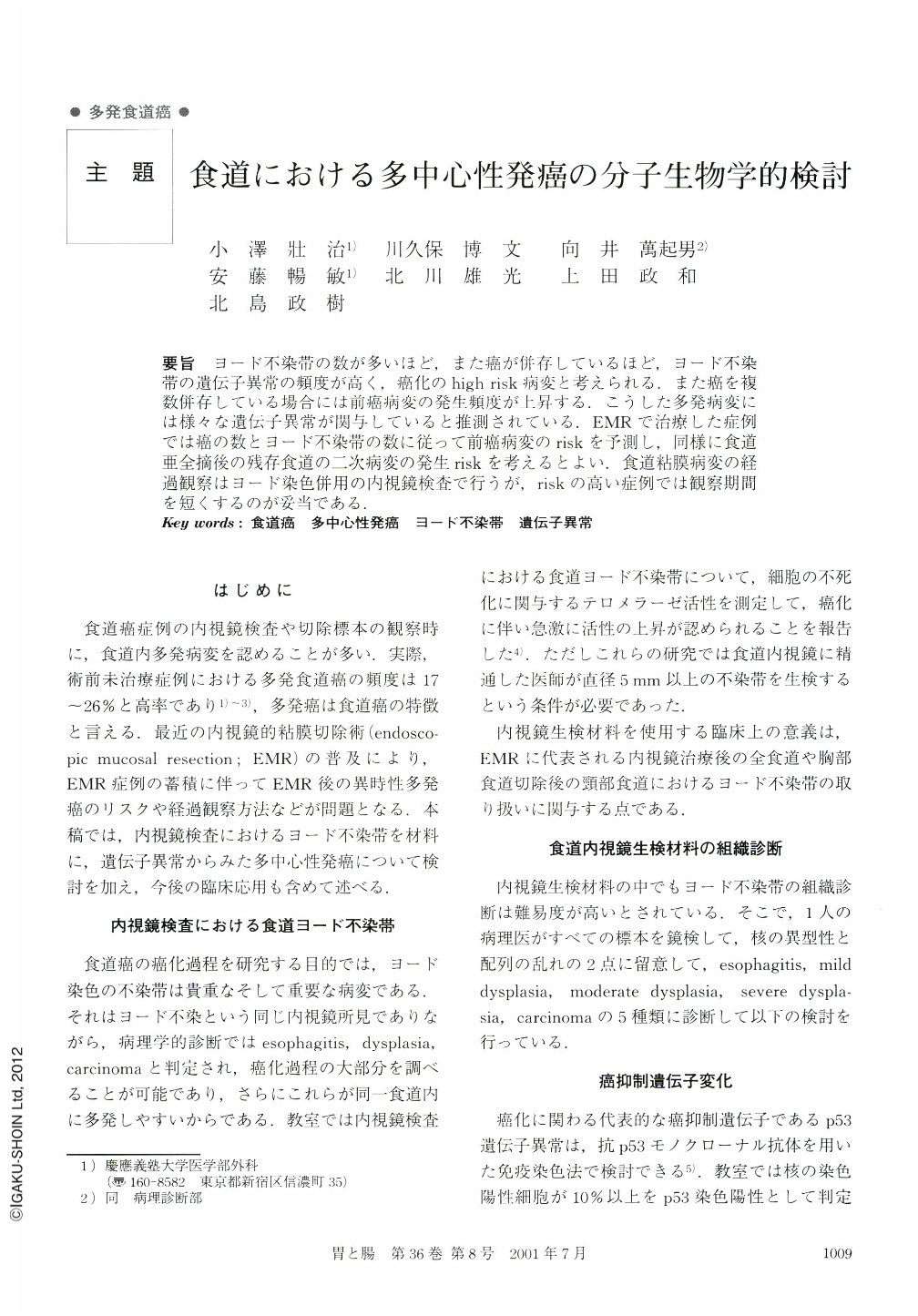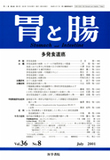Japanese
English
- 有料閲覧
- Abstract 文献概要
- 1ページ目 Look Inside
要旨 ヨード不染帯の数が多いほど,また癌が併存しているほど,ヨード不染帯の遺伝子異常の頻度が高く,癌化のhigh risk病変と考えられる.また癌を複数併存している場合には前癌病変の発生頻度が上昇する.こうした多発病変には様々な遺伝子異常が関与していると推測されている.EMRで治療した症例では癌の数とヨード不染帯の数に従って前癌病変のriskを予測し,同様に食道亜全摘後の残存食道の二次病変の発生riskを考えるとよい.食道粘膜病変の経過観察はヨード染色併用の内視鏡検査で行うが,riskの高い症例では観察期間を短くするのが妥当である.
As it is reported that the incidence of esophageal multiple primary cancers ranges between 17 and 26% of the total number of lesions examined, it can be said that the esophagus is a special gastrointestinal organ where multi centric carcinogenesis occurs. When we focused on iodine-nonreactive lesions as precancerous lesions, we noticed that the number of iodine-nonreactive lesions correlated with the risk of carcinogenesis and that it was accompanied by increased risk of cancer. Moreover, the more cancer the esophagus has, the more dysplasia the lesions manifast. It is speculated that many genetic alterations result during the development of these multiple primary lesions. We should appropriately estimate the risk of carcinogenesis in the residual esophagus of cases who have undergone endoscopic mucosal resection (EMR) and cases who have undergone subtotal esophagectomy. If cases with high cancer risk are examined endoscopically, the interval of examination should be made at intervals as short as 6 months. When malignant lesions are found, they are likely to be in an early stage and can be treated with a minimally invasive method such as EMR.

Copyright © 2001, Igaku-Shoin Ltd. All rights reserved.


